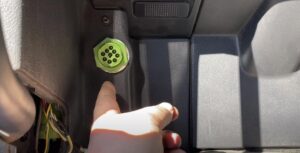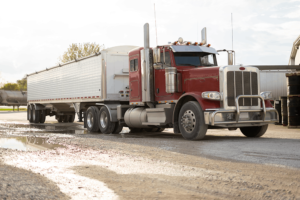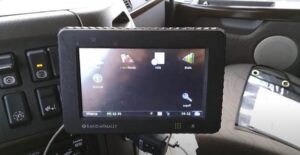
Hotshot trucking, known for its urgency and flexibility, is a specialized transport service for time-sensitive, smaller loads. This guide focuses on the crucial role of Electronic Logging Devices (ELDs) in hotshot trucking. We’ll explore their importance, key features to consider, top ELD options, implementation steps, and the significance of regulatory compliance and record-keeping in this dynamic industry. Whether you’re a seasoned hotshot trucker or a newcomer, understanding ELDs is essential for success.
What Is Hotshot Trucking?
At its core, hotshot trucking refers to a unique type of trucking that usually involves transporting smaller, time-sensitive loads to specific destinations. Unlike conventional trucking, hotshot trucking often requires quicker delivery times, making it a go-to solution for urgent freight needs.
Key Characteristics of Hotshot Trucking
- Urgency: Hotshot trucking revolves around the urgent delivery model. Unlike conventional trucking, which can handle larger and less time-sensitive loads, hotshot trucking specializes in transporting smaller, time-critical shipments. This focus on speed and efficiency is the hallmark of hotshot trucking, making it the preferred choice for businesses with immediate freight requirements. Hotshot drivers are often called upon to deliver goods quickly, ensuring that they reach their destination promptly;
- Flexibility: Hotshot truckers enjoy a significant degree of autonomy in choosing their routes and schedules. This flexibility allows them to adapt to changing circumstances and optimize their journeys for efficiency. It also enables them to respond promptly to last-minute requests or changes in delivery destinations, further enhancing their ability to meet urgent delivery demands;
- Equipment: One of the distinguishing features of hotshot trucking is the use of lighter-duty trucks and trailers. While conventional long-haul trucks are designed to transport heavy loads over extended distances, hotshot truckers typically employ smaller vehicles, such as pickup trucks, flatbed trucks, or gooseneck trailers. This equipment is better suited for handling the smaller and more time-sensitive shipments that are common in hotshot transportation.
Types of Hotshot Trucks
Hotshot trucking is a specialized transportation service that utilizes various types of vehicles to accommodate different hauling needs, ensuring efficient and reliable transportation. Here’s an overview of the common types of hotshot trucks:
| Type of Vehicle | Description |
| Pickup Trucks | These trucks are integral to hotshot trucking, prized for their versatility and agility. Ideal for transporting smaller loads, they excel in quick deliveries and can easily navigate through congested urban areas. |
| Flatbed Trucks | A staple in hotshot trucking, flatbed trucks are chosen for their flexibility in hauling various load types. They have an open platform without sides or roof, accommodating oversized or irregular cargo. Perfect for construction materials, machinery, and heavy equipment, their open design aids in easy loading and unloading. |
| Gooseneck Trailers | For heavy and bulky items, gooseneck trailers are the preferred choice. Capable of carrying heavier loads than standard flatbeds, they offer superior stability and weight distribution. Their unique design connects to a truck hitch, adding strength. They are widely used for large machinery, construction materials, and oversized items. |
| Enclosed Trailers | When security and protection are critical, enclosed trailers are used. They have walls and a roof, providing a secure, weather-resistant space for valuable or sensitive cargo. Ideal for high-value items, fragile goods, and temperature-sensitive products, they shield the cargo from weather, dust, and theft. |
| Cargo Vans | Cargo vans strike a balance between capacity and maneuverability. They are suitable for loads that need more space but must still be efficiently navigated through city streets. |
The Role of Hotshot Trucking in Logistics
Hotshot trucking plays a crucial role in the broader logistics landscape. It serves as a reliable solution for businesses that require time-sensitive deliveries, allowing them to meet their customer demands and maintain a competitive edge. Some key roles of hotshot trucking in logistics include:
- Emergency Freight: Hotshot trucking is often the go-to option when businesses face emergencies or unexpected supply chain disruptions. It provides a lifeline for the rapid transport of critical goods, ensuring minimal downtime;
- Just-in-Time (JIT) Delivery: Many industries, such as manufacturing and healthcare, rely on JIT inventory management. Hotshot trucking helps facilitate JIT by delivering components and supplies precisely when needed, reducing warehousing costs and improving efficiency;
- Specialized Services: Hotshot trucking is well-suited for delivering specialized or sensitive cargo, such as medical equipment, perishable goods, or automotive parts. Its speed and flexibility ensure that these items reach their destinations in optimal condition.
The Appeal of Hotshot Trucking

Hotshot trucking is undeniably attractive for several reasons, making it an appealing career path for many aspiring truck drivers and entrepreneurs. Below, we will delve into the key factors that contribute to the widespread allure of hotshot trucking.
Independence: Freedom in Scheduling and Job Selection
One of the primary draws of hotshot trucking is the unparalleled level of independence it offers to drivers. Unlike traditional trucking jobs, where drivers may have strict schedules and routes dictated by a company, hotshot truckers have a high degree of autonomy. Here’s how:
- Flexibility in Scheduling: Hotshot truckers have the freedom to set their own schedules. This means they can choose when to work, allowing for a more balanced work-life scenario. It’s especially advantageous for those who prefer working non-traditional hours or want to spend more time with their families;
- Job Selection: Hotshot truckers can select the specific jobs and routes they want to take. This allows them to tailor their work to their preferences and expertise. For instance, a driver with a passion for transporting oversized loads or specialized cargo can focus on those types of jobs;
- Business Ownership: Many hotshot truckers operate as independent contractors or owner-operators, which means they essentially run their own small businesses. This level of ownership can be highly appealing for entrepreneurial-minded individuals.
Lower Start-Up Costs: Compared to Traditional Trucking
Another compelling aspect of hotshot trucking is the relatively lower start-up costs involved when compared to traditional trucking. These reduced financial barriers make it more accessible for individuals looking to enter the trucking industry. Here’s a breakdown:
- Smaller Equipment: Hotshot trucks are typically smaller than the massive tractor-trailers used in long-haul trucking. These smaller vehicles, often pickup trucks with trailers, are more affordable to purchase or lease;
- Lower Overhead: Hotshot trucking operations typically have lower overhead costs. Drivers may not need to maintain large fleets of vehicles, extensive warehouses, or multiple employees, which can significantly reduce initial expenses;
- Regulatory Requirements: In some cases, hotshot trucking may have fewer regulatory requirements compared to traditional trucking, leading to potential cost savings in terms of permits, licenses, and insurance.
Diverse Opportunities: In-Demand Across Various Industries
Hotshot trucking services are in high demand across a wide range of industries, adding to its appeal. This versatility means that hotshot truckers can explore diverse job opportunities and markets. Consider the following industries that rely on hotshot trucking:
- Oil and Gas: Hotshot trucking plays a vital role in transporting equipment, machinery, and parts for the oil and gas industry, often to remote locations where traditional transportation methods may be less feasible;
- Construction: Construction projects frequently require the timely delivery of building materials, machinery, and equipment. Hotshot truckers are well-positioned to fulfill these transportation needs;
- Agriculture: From transporting livestock to delivering agricultural equipment and supplies, hotshot trucking supports the agricultural sector by ensuring the timely movement of goods;
- Emergency Response: During emergencies such as natural disasters or power outages, hotshot truckers can quickly deliver essential supplies and equipment to affected areas, contributing to disaster relief efforts.
Understanding ELDs in Hotshot Trucking

Electronic Logging Devices (ELDs) are sophisticated digital systems that have revolutionized the way the trucking industry operates. They automatically record driving time and hours of service (HOS) for truck drivers, ensuring strict adherence to regulations set by the Federal Motor Carrier Safety Administration (FMCSA). In the context of hotshot trucking, where schedules are often tight and loads urgently need to reach their destinations, the choice of the right ELD can be a game-changer. Let’s delve into the importance of ELDs in hotshot trucking:
Compliance
One of the fundamental aspects of hotshot trucking is adhering to HOS regulations. ELDs are instrumental in ensuring compliance by automating the tracking of driving hours and alerting drivers when they approach their legal limits. Here’s a closer look at how ELDs facilitate compliance:
- Real-Time Monitoring: ELDs provide real-time tracking of driving hours, helping drivers and fleet managers stay within the legal limits. This minimizes the risk of violations and the associated penalties;
- Automatic Log Entries: ELDs automatically generate accurate log entries, reducing the chances of errors or falsifications, which can result in costly fines and legal consequences;
- Warnings and Alerts: ELDs proactively warn drivers when they are approaching HOS limits, allowing them to make informed decisions about rest breaks and driving schedules;
- Electronic Reporting: ELDs streamline the reporting process, making it easier for hotshot trucking companies to maintain compliance records and submit them to regulatory authorities when required.
Efficiency
In hotshot trucking, efficiency is crucial to meet tight delivery schedules and optimize operations. ELDs contribute to efficiency in various ways:
- Route Planning: ELDs provide access to real-time traffic and weather information, enabling drivers to choose the most efficient routes and avoid delays;
- Time Management: ELDs help drivers manage their time more effectively by tracking driving hours and available rest periods. This ensures that they make the most of their available driving time while staying compliant;
- Paperwork Reduction: ELDs eliminate the need for manual paper logbooks, reducing administrative tasks and freeing up time for drivers to focus on driving and delivering loads;
- Communication: Many ELD systems include communication features, allowing drivers to stay in touch with dispatchers and receive updates on load assignments, changes in routes, or any unexpected events.
Safety
Safety is paramount in the hotshot trucking industry, and ELDs play a crucial role in enhancing it:
- Fatigue Management: ELDs help prevent driver fatigue by ensuring that drivers take mandatory rest breaks. This reduces the risk of fatigue-related accidents, which are a significant concern in the industry;
- Accident Reconstruction: In the unfortunate event of an accident, ELD data can be invaluable for accident reconstruction, helping authorities and insurers determine the cause and liability;
- Driving Behavior Monitoring: Some ELDs can monitor driver behavior, such as harsh braking and acceleration, which can be used to promote safe driving practices and reduce accidents.
Choosing the Best ELD for Hotshot Trucking

Selecting the best ELD for your hotshot trucking business involves considering several factors:
Features to Look For
When evaluating ELD options for hotshot trucking, it’s crucial to assess their features. The right ELD system should offer the following:
- Ease of Use: A user-friendly interface is paramount for hotshot truckers. Look for an ELD system that allows for quick and efficient logging, reducing the time spent on administrative tasks and ensuring compliance with Hours of Service (HOS) regulations;
- Reliability: The ELD system should provide consistent performance without technical glitches. Downtime due to system failures can lead to lost revenue and potential violations;
- Integration: Hotshot trucking often involves using various logistics tools, such as GPS for navigation and fuel tracking systems. Choose an ELD that can seamlessly integrate with these tools, streamlining your operations and data management;
- Support: Access to robust customer support and training resources is crucial. Ensure that the ELD provider offers adequate support to help you resolve any issues and provides training to help you make the most of the system.
Top ELD Options for Hotshot Trucking
Now that we have identified the key features to look for in an ELD system, let’s explore some top ELD options that are well-suited for hotshot trucking:
| ELD Provider | Best For | Key Features | Support | Pricing | Additional Details |
| Samsara ELD | Overall ELD service, fleet management | Digital Hours of Service logs, real-time GPS, engine diagnostics, violation alerts, fuel tracking, optional dashcams | 24/7 support, Driver app rating: 4.6 stars | Custom pricing, Minimum three-year contract | Noted for reliable performance, easy installation, comprehensive fleet management services |
| Matrack ELD | Pricing, drivers on a budget | Digital HOS logs, IFTA tracking, compliance breach alerts, employee timeclock | Customer support via phone or email during regular work hours | Starts at $19.95 per month, no contracts. Hardware included free with subscription | Offers a lifetime warranty, ideal for ELD compliance without extra efficiency features |
| GPS Insight | Location tracking | Digital HOS logs, two-way messaging, compliance breach alerts, maintenance alerts | 24/7 support, Driver app rating: 3.6 stars | Starts at $14.95/month, additional costs for HOS solution as add-on | Strong in compliance and support, robust solution for hotshot trucking |
| Garmin eLog | Subscription-free use, portable hardware | Automated recording of HOS, compatible with FMCSA web services over Bluetooth or USB | 24/7 customer support | $249.99 with no ongoing costs | Ideal for those seeking a device without monthly subscription fees |
| BigRoad ELD (Dashlink) | Fleet owners | GPS tracking, driver and vehicle safety monitoring, IFTA mileage reporting | Not specified | No upfront costs, $36/month for Fleet Management bundle, $19.50/month for owner-operators (billed annually) | Popular for fleet management features |
Implementing ELDs in Your Hotshot Business
Once you’ve chosen the best ELD for your hotshot trucking business, implementation is the next step. This involves:
Training
Training is the foundational step in implementing ELDs effectively. It is crucial to educate yourself and your drivers on how to use the ELD system proficiently. This not only ensures compliance with regulatory requirements but also helps in maximizing the benefits of the ELD technology. Here’s a breakdown of the training process:
- Understanding ELD Functions: Familiarize yourself and your drivers with the core functions of the chosen ELD system. This includes logging hours, documenting duty status changes, and using the device interface;
- Regulatory Compliance: Ensure that all drivers are well-versed in the specific ELD rules and regulations applicable in your region. This includes knowledge of Hours of Service (HOS) rules and exemptions;
- Hands-On Training: Provide hands-on training sessions with the actual ELD hardware and software. This will help drivers become comfortable with using the device while on the road;
- Troubleshooting: Equip your team with troubleshooting skills to handle common issues that may arise during ELD operation. This includes resolving connectivity problems and addressing technical glitches;
- Documentation: Emphasize the importance of accurate and timely documentation. Teach drivers how to review and certify their logs, as well as how to annotate any discrepancies.
Integration
Seamless integration of the ELD system with your existing operational processes is essential for a hassle-free transition. Here’s how you can achieve a smooth integration:
- System Compatibility: Ensure that the chosen ELD is compatible with your existing fleet management software, dispatch systems, and other relevant tools;
- Data Transfer: Establish efficient data transfer protocols between the ELD and your back-office systems. This may involve setting up APIs or utilizing file transfer methods;
- Driver Training Records: Maintain comprehensive records of driver training on ELD usage. This will serve as documentation of compliance and can be valuable during audits;
- Test Runs: Conduct test runs with the ELD system before full deployment. Identify and resolve any integration issues in a controlled environment;
- Support Team: Have a dedicated support team or IT personnel available to assist with integration and troubleshoot any technical challenges that may arise during implementation.
Monitoring
After successful training and integration, the final piece of the puzzle is continuous monitoring. Regularly reviewing ELD data is crucial for optimizing operations and ensuring ongoing compliance. Here’s how to approach monitoring:
- Data Review: Set up a schedule for reviewing ELD data, including driver logs, vehicle diagnostics, and any other relevant metrics. Regularity is key; daily or weekly reviews are recommended;
- Compliance Auditing: Conduct periodic compliance audits to ensure that your drivers are consistently adhering to ELD regulations. Address any non-compliance issues promptly;
- Performance Metrics: Utilize ELD-generated performance metrics to identify areas for improvement in your operations. This data can help optimize routes, reduce idle time, and enhance fuel efficiency;
- Feedback Loop: Establish a feedback loop with your drivers. Encourage them to report any ELD-related challenges or issues they encounter while on the road;
- Continuous Training: Provide ongoing training and support to your drivers. ELD technology may evolve, and continuous education ensures that your team remains proficient.
Conclusion
Hotshot trucking relies on Electronic Logging Devices (ELDs) for regulatory compliance, efficiency, and safety. ELDs automate tracking of driving hours, optimize routes, and eliminate paperwork. Key considerations when choosing an ELD include user-friendliness, reliability, integration capabilities, and support. Effective implementation involves thorough training, seamless integration, and continuous monitoring. Hotshot trucking appeals to many due to its independence, lower startup costs, and diverse job opportunities. To succeed, hotshot truckers must embrace ELD technology to ensure compliance, efficiency, and safety while delivering time-sensitive cargo.
FAQ
1. What is hotshot trucking, and how is it different from conventional trucking?
Hotshot trucking specializes in quick, time-sensitive deliveries with lighter-duty trucks, offering flexibility and urgency compared to traditional trucking.
2. What types of hotshot trucks are commonly used, and what are their capabilities?
Hotshot trucking employs pickup trucks, flatbed trucks, gooseneck trailers, enclosed trailers, and cargo vans, each suited for specific cargo types.
3. What role does hotshot trucking play in logistics, and how does it benefit various industries?
Hotshot trucking supports time-sensitive deliveries, emergency freight transport, just-in-time inventory management, and specialized cargo transport across industries.
4. What makes hotshot trucking an attractive career option?
Hotshot trucking offers independence, lower startup costs compared to traditional trucking, and diverse job opportunities.
5. How do Electronic Logging Devices (ELDs) contribute to hotshot trucking, and what should be considered when choosing one?
ELDs ensure compliance with hours of service (HOS) regulations, enhance efficiency through route planning, and improve safety. Factors to consider when choosing an ELD include features, reliability, integration capabilities, and support.





